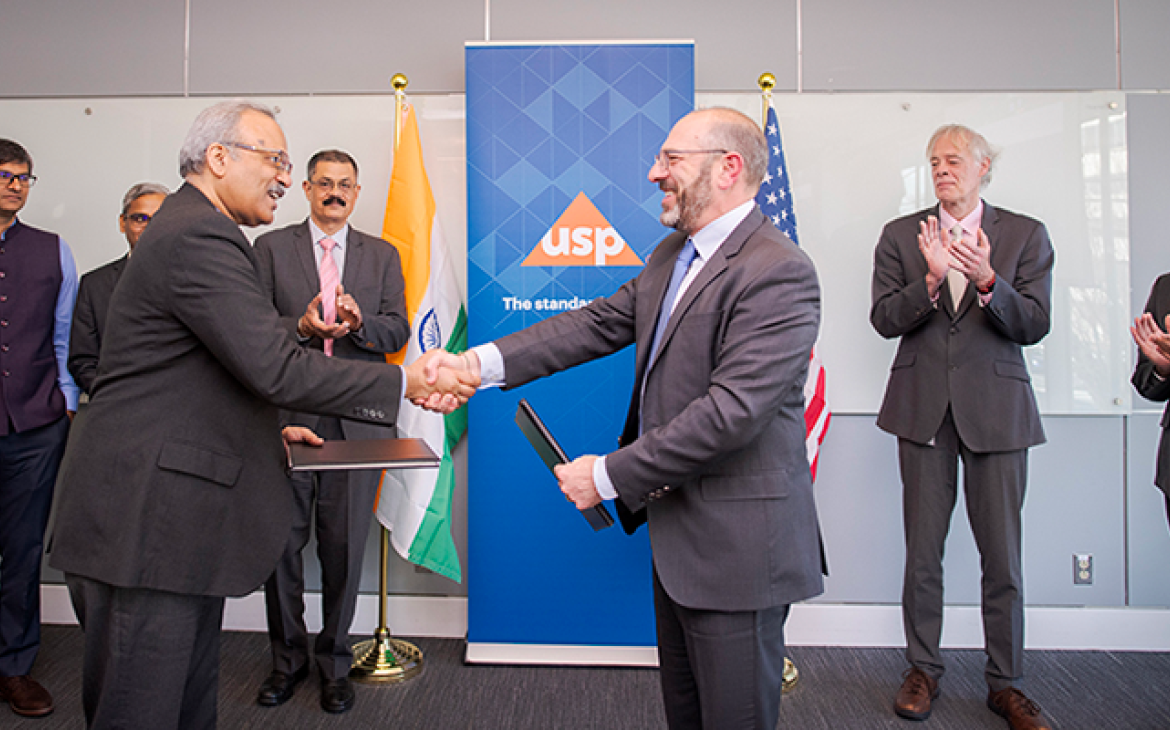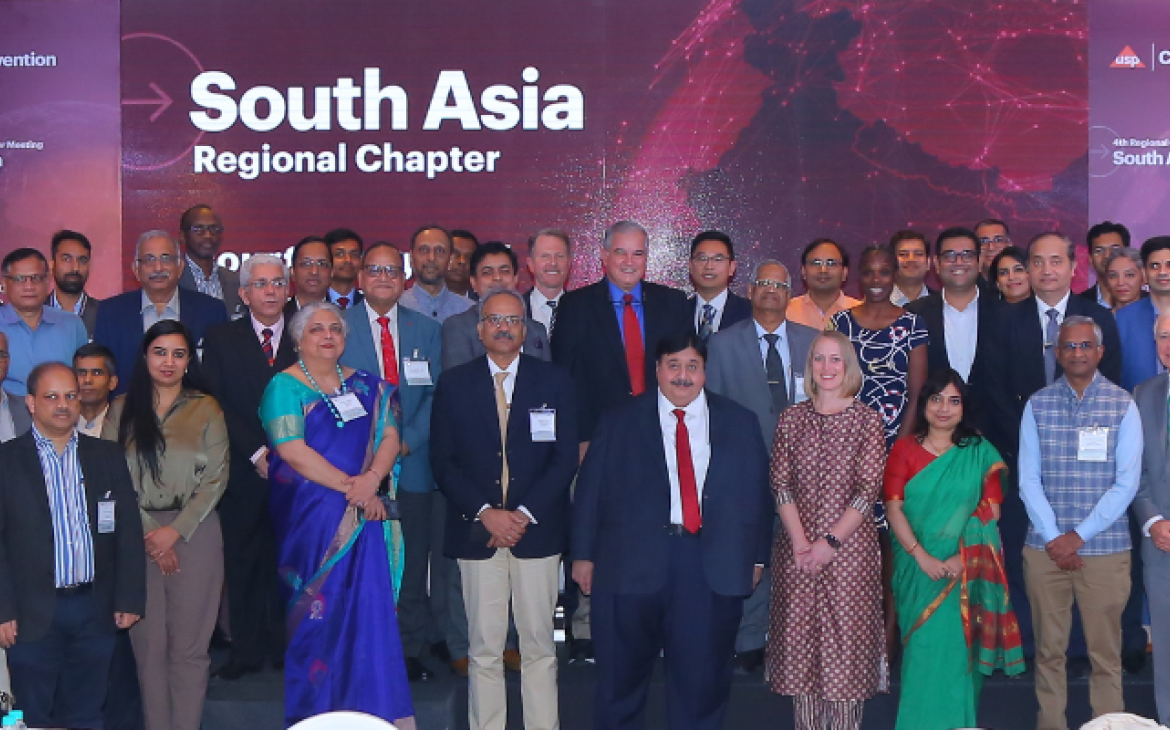
Each year in October, we celebrate World Standards Day and the thousands of scientists and other experts around the world who develop standards that impact every aspect of our daily lives – from the products and services we purchase to the environment, health and safety of our communities. This year’s theme is a “shared vision for a better world” to showcase how standards are essential to achieving the United Nations Sustainable Development Goals by accelerating access to clean water, quality healthcare, sanitation, decent housing, clean energy and more.
Quality Standards Build Trust In Medicine
Standards play an important role in the global medicines supply chain, helping governments and manufacturers increase the availability of safe, quality medicines, as well as building patient and health provider trust. In fact, quality standards are a big reason why we in the U.S. can get a prescription filled at our neighborhood pharmacy and trust that the medicine we receive will be safe and work as it should.
You can’t have a strong medicines supply chain without safe, quality health products. The U.S. Pharmacopeia has developed more than 7,000 science-based standards that support the development, manufacture, distribution and administration of medicines and other health products. Many of these standards are known as drug monographs, which provide specifications, limits and testing methods to determine the identity of a drug, control for harmful levels of impurities, and ensure the correct potency of the drug and its ability to be properly absorbed in the body.
These USP standards are developed by scientists and other experts and are publicly available. Manufacturers are required by law to assure their products meet USP standards in order to be marketed in the U.S. In addition, government regulators in more than 40 countries rely on USP standards for their work. And USP physical reference standards used in product development and quality assurance and quality control activities are distributed to more than 150 countries around the world. With this extensive system in place, patients can trust that medicines with the same name will be consistent in quality no matter who manufactures it or where in the world it is made. Since manufacturers know the precise quality specifications, standards help make the approval process for generic medicines more efficient.
By enabling a multi-manufacturer environment, USP standards have helped increase the availability of medicines to treat cardiovascular disease, cancer, diabetes, mental health and many other conditions. A study conducted by researchers from Johns Hopkins University found that drugs with a USP monograph had 50% more manufacturers than drugs without a USP monograph.
In addition to standards for active pharmaceutical ingredients, USP also develops standards for the inactive ingredients (excipients) and other raw materials used in drug manufacturing. There are also related standards that address a wide range of topics such as packaging, storage and distribution of medicines, the preparation of compounded medicines and prescription labeling. This collection of standards is a foundational tool used to ensure the quality of health care products in the supply chain, from upstream raw material selection and drug discovery all the way to a patient’s medicine cabinet.
Professionals working at points all along the medicines supply chain rely on standards to assure the quality of health care products making their way to patients. USP’s publicly available standards are used by government regulators, public health authorities, and others to confirm that the medicines provided to patients meet quality expectations for safety and effectiveness. In addition to enabling efficiencies in the approval process they are also a tool for regulators to remove poor-quality and unsafe products from the market. Customs and border officials and law enforcement authorities also rely on USP standards to confirm the quality of medicines and their ingredients from overseas sources.
Reducing Drug Shortages
The COVID-19 pandemic brought a greater focus on the problem of drug shortages in the U.S. that can occur when there is a problem with the supply chain. Such shortages negatively impact patient health outcomes because they can result in treatment that is delayed or denied, or the use of a second-line treatment which may be less efficacious or lead to increased or different side effects. In a 2019 report on drug shortages, the FDA found that 62% of drug shortages occur because of quality issues in manufacturing.
Quality issues in pharmaceutical manufacturing can arise in many ways. These can include a change in a raw materials supplier or in a manufacturing process, problems with product storage or transportation, or failures in laboratory controls and processes. These can lead to substandard products and regulatory action, which can quickly lead to a drug shortage if the manufacturer in question is the only one making the drug or if other manufacturers are unable to increase production to meet demand. Because USP standard clearly define quality expectations for drug products, they are an important safeguard to prevent drug shortages along with workforce training to ensure proper application of the standards.
Sometimes a new, unanticipated threat appears. In this case, standards help regulators, manufacturers and other stakeholders better understand the threat and how to control it by codifying a commonly accepted approach. This is what has been happening with nitrosamine impurities. Starting in 2018, the presence of nitrosamine impurities was identified in some angiotensin II receptor blockers (ARBs) used to treat high blood pressure and heart failure. Subsequently, nitrosamine impurities have been found in additional drug products, leading to a major effort by regulators and industry to reduce or eliminate their presence in the drug supply. Nitrosamine impurities can result from a variety of factors during the lifecycle of a drug’s development and manufacturing. USP is supporting manufacturers and regulators with tools and solutions for testing, assessing risk and understanding potential sources related to nitrosamine impurities.
Responding To Public Health Crises
Standards have also been used to respond to public health emergencies. In the first few months of the COVID-19 pandemic, stores began running out of hand sanitizers, which are regulated by FDA as over-the-counter drugs and used to prevent disease transmission. Distilleries, perfumeries and other businesses, as well as compounding pharmacies, stepped up to make this important product, but there was no agreed upon standard for how to do so. USP engaged its scientific committee and quickly developed standards to support the production of quality hand sanitizers. Several months later, hand sanitizer products manufactured in Mexico began appearing in the U.S. that were contaminated with methanol, a toxic substance. USP worked closely with FDA to revise the monographs (standards) for alcohol to include identity testing for methanol. This revision enabled the standard to be used as an enforcement tool to remove the adulterated methanol sanitizer from the shelves as well as prevent future incidents of methanol contamination in sanitizer and other drug products.
In 2007 and 2008, nearly 150 patients died and hundreds more suffered serious adverse reactions after they were treated with heparin, a commonly used blood-thinning drug. Heparin is made from pig intestines, which at that time in China were subject to sharp price increases due to widespread pig deaths from “blue ear disease.” As a result, over-sulfated chondroitin sulfate (OSCS) was substituted for some of the actual heparin. OSCS costs far less, and was able to “fool” existing quality tests by closely mimicking heparin’s blood-thinning characteristics, but without heparin’s critical anti-coagulant properties. USP collaborated with FDA to quickly contain the crisis by updating the monograph for heparin sodium to include new tests to detect OSCS and develop physical reference standards against which test results could be verified.
Supply Chain Vulnerabilities In Focus
The COVID-19 pandemic surfaced vulnerabilities in the global medicines supply chain. USP is applying its knowledge in medicine standards to new solutions to make the supply chain more resilient. For example, our scientists are developing standards to aid in modernizing pharmaceutical manufacturing, which aims to increase overall medicine production capability, expand pharmaceutical manufacturing to more regions to reduce over-reliance on sourcing from a few countries, and increase the overall quality of medicines as well as quality control processes. In another initiative, USP is gleaning insights from data on standards distribution and usage in order to develop an early-warning capability for potential disruptions in the upstream medicines supply chain.
Since we recognize the power of USP standards to create systemic changes, we have reexamined how we prioritize the development of new standards to focus on standards that can increase the resiliency of the supply chain. This includes standards to support the production of vaccines, antibiotics and monoclonal antibodies, as well as standards to control for impurities in medicines, so that they don’t lead to recalls and shortages.
We are proud of USP’s 200-year history of setting standards to build trust in medicines and protect patients. The COVID-19 pandemic has challenged us all in ways we never could have imagined. We are working hard to apply lessons learned to strengthen the supply chain and to be prepared for future global health crises. On this World Standards Day, we celebrate our peers – the many standard-setting organizations around the world, and look forward to working in concert to make our “shared vision for a better world” a reality. Together we can improve the human condition by creating a more sustainable future as well as a just and equitable society.


